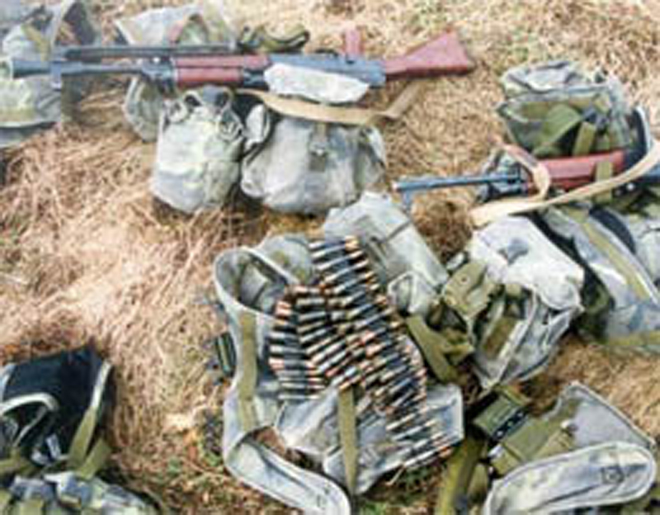An international convention banning the use of cluster munitions that went into effect just three months ago has already led to the destruction of millions of the bombs, the Cluster Munitions Monitor 2010 report said Monday, DPA reported.
Seven signatories to the Convention on Cluster Munitions that went into effect on August 1, have destroyed stockpiles of 13.8 million of the devices and eleven more countries are in the process of destroying their stocks, the Cluster Munitions Monitor 2010 revealed.
"The progress that has been made in eliminating these weapons from the face of the earth has been nothing short of remarkable," said Stephen Goose, editor of the Cluster Munition Monitor.
Cluster munitions eject smaller submunitions and are designed to kill, maim and demoralize civilian populations.
To date 38 former users, producers and stockpilers of cluster munitions have joined the treaty, leaving some 73 countries that continue to stockpile the explosives.
The main producers and stockpilers, which include the United States, China, Russia, Israel, India and Pakistan, have refused to join the treaty, which some critics have called a "feel good" exercise.
There remain an estimated 146 million submunitions in state stockpiles.
On November 9-12, Laos is to host the first ever meeting of states party to the Convention on Cluster Munitions to map out an "action plan" against the scourge.
Laos remains the "most heavily contaminated" by cluster munitions, that were used on the land-locked country by the US military decades ago.
The US, as part of its so-called "secret war" in Laos, dropped millions of bombs and mines on the country's eastern provinces. This was an effort to destroy the jungle bases of Lao and Vietnamese communist forces and disrupt the Ho Chi Minh Trail, which was the main logistical passage from North to South Vietnam during the Indochina War in the 1960s and '70s.
According to the first survey of unexploded ordnance released by the government's National Regulatory Authority, about 30,000 Lao fell victim to the bombs and mines from 1964 to 1973 and another 20,000 thereafter with accidents continuing to be reported as late as last year, the Vientiane Times said.
Last year, of the 100 confirmed casualties of cluster munitions worldwide, 33 were in Laos, Gross told a press conference in Bangkok.
The meeting in Vientiane next week will seek to raise more donations from the international community to help Laos and other countries affected by cluster munitions, such as Vietnam, Afghanistan, Lebanon and Cambodia, with clearance and services for victims.
A Cluster Munitions Trust Fund, with 4.15 million dollars in donations, was set up last year. The US is one of the main donors to the ongoing clearance efforts, even though it has refused to ban the use of the explosives.
"The US insists on the right to use cluster munitions while at the same time spends a lot of money to clean up the mess, and they don't seem to realize the connection between them," Goose told a press conference in Bangkok.
The Laos meeting, the first of its kind, is scheduled to include representatives from 106 countries and more than 400 civil society groups.
"The objective of the first meeting is to set the framework for putting this treaty in to practice," said Thomas Nash, coordinator of the Cluster Commission Monitor.
Cluster munition ban gains momentum, monitor says
An international convention banning the use of cluster munitions that went into effect just three months ago has already led to the destruction of millions of the bombs, the Cluster Munitions Monitor 2010 report said Monday.






